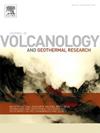Evolution of the Galeras Volcanic complex, SW Colombia: An updated version of the stratigraphy and geological map
IF 2.3
3区 地球科学
Q2 GEOSCIENCES, MULTIDISCIPLINARY
Journal of Volcanology and Geothermal Research
Pub Date : 2025-09-22
DOI:10.1016/j.jvolgeores.2025.108449
引用次数: 0
Abstract
The Galeras Volcanic Complex (GVC) is one of the most active centers in the southern Colombian Andes. In this study, we present an updated version of the GVC geological map by integrating field observations with existing literature, new Ar/Ar and 14C geochronology, petrography, geochemistry, and remote sensing analyses. Our revised stratigraphic scheme combines lithostratigraphic units (as the basic mapped units) into informal lithosomes (representing the main eruptive centers), with interpretations of the volcanological sequence in terms of eruption units (e.g., fallout, pyroclastic density current, block-and-ash flow) and volcanic activity units (e.g., period, epoch, eruption, phase, pulse), which are fundamental for understanding the volcanic evolution of the GVC throughout its history.
The GVC is an andesitic to basaltic andesitic volcanic complex consisting of five overlapping stratovolcanoes: Cariaco, Coba Negra, Genoy, Urcunina, and Galeras; as well as one adventive cone known as La Guaca located southwest of the complex. Only remnants of the oldest Cariaco edifice, formed between 1440 ± 163 and 1249 ± 279 ka, are preserved to the west. Progressive vent migration eastward led to the formation of the Coba Negra (1138 ± 30 ka – 406 ± 3.2 ka) and Genoy (364 ± 47 ka to ∼9 ka) structures, controlled by lateral collapses under structural influence. Monogenetic activity southwest of the complex is recorded by basaltic lava flows dated at 900 ka and 185 ka, as well as the La Guaca scoria cone. Urcunina, smaller than the previous edifices, was the last eruptive center (∼7.5–0.9 ka) before the current active cone. Similar to Coba Negra and Genoy, the summit of Urcunina is truncated by a volcano-tectonic collapse scar, representing a proximal unconformity that, along with its related disconformities in medial to distal zones, indicates volcanic quiescence. Renewed eruptions occurred in approximately the same vent position, filling the upper part of the Urcunina tectonic depression and forming the active Galeras cone. Holocene activity has been dominated by dome-building events, lava flows, Strombolian activity, and minor to moderate vulcanian eruptions, often destroying domes partially or completely. Deposits from historical eruptions are primarily found around the summit and upper parts of the Urcunina collapsed scar. The volcano is considered active based on current seismic activity, gas emissions through fumaroles, hot springs, and the eruptive activity recorded from 1989 to 2013.
哥伦比亚西南部Galeras火山复合体的演化:地层学和地质图的更新版本
加拉斯火山群(GVC)是哥伦比亚安第斯山脉南部最活跃的火山中心之一。在这项研究中,我们将野外观测与现有文献、新的Ar/Ar和14C地质年代学、岩石学、地球化学和遥感分析相结合,提出了一个更新版本的GVC地质图。我们修订的地层方案将岩石地层单元(作为基本的测绘单元)结合到非正式的岩石体(代表主要的喷发中心)中,并根据喷发单元(如沉降物、火山碎屑密度流、块体和火山灰流)和火山活动单元(如时期、时代、喷发、阶段、脉冲)来解释火山序列,这是理解GVC整个历史中火山演化的基础。GVC是一个由Cariaco、Coba Negra、geny、Urcunina和Galeras五个叠合层状火山组成的安山岩-玄武岩安山岩火山复合体;以及位于建筑群西南的一个被称为La Guaca的外来锥。只有最古老的卡里亚科大厦的遗迹,建于1440±163和1249±279之间,在西边被保存下来。在构造影响下的侧向崩塌控制下,东进式通风口迁移形成了Coba Negra(1138±30 ka ~ 406±3.2 ka)和geny(364±47 ka ~ ~ 9 ka)构造。该杂合体西南部的单成因活动由900 ka和185 ka的玄武岩熔岩流以及La Guaca火山锥记录。乌库尼亚火山比以前的火山要小,是在目前的活动锥之前的最后一个喷发中心(~ 7.5-0.9 ka)。与Coba Negra和geny类似,Urcunina的峰顶被火山构造崩塌的创伤截断,代表了一个近端不整合面,与中部到远端相关的不整合面一起,表明火山静止。再次喷发发生在大致相同的火山口位置,填满了乌库尼亚构造凹陷的上部,形成了活跃的Galeras锥。全新世活动主要是圆顶建筑事件、熔岩流、斯特龙堡活动和小到中度的火山喷发,这些活动经常部分或完全破坏圆顶。历史上火山喷发形成的沉积物主要分布在乌库尼亚崩塌疤痕的顶部和上部。根据目前的地震活动、喷气孔排放的气体、温泉以及1989年至2013年记录的喷发活动,该火山被认为是活跃的。
本文章由计算机程序翻译,如有差异,请以英文原文为准。
求助全文
约1分钟内获得全文
求助全文
来源期刊
CiteScore
5.90
自引率
13.80%
发文量
183
审稿时长
19.7 weeks
期刊介绍:
An international research journal with focus on volcanic and geothermal processes and their impact on the environment and society.
Submission of papers covering the following aspects of volcanology and geothermal research are encouraged:
(1) Geological aspects of volcanic systems: volcano stratigraphy, structure and tectonic influence; eruptive history; evolution of volcanic landforms; eruption style and progress; dispersal patterns of lava and ash; analysis of real-time eruption observations.
(2) Geochemical and petrological aspects of volcanic rocks: magma genesis and evolution; crystallization; volatile compositions, solubility, and degassing; volcanic petrography and textural analysis.
(3) Hydrology, geochemistry and measurement of volcanic and hydrothermal fluids: volcanic gas emissions; fumaroles and springs; crater lakes; hydrothermal mineralization.
(4) Geophysical aspects of volcanic systems: physical properties of volcanic rocks and magmas; heat flow studies; volcano seismology, geodesy and remote sensing.
(5) Computational modeling and experimental simulation of magmatic and hydrothermal processes: eruption dynamics; magma transport and storage; plume dynamics and ash dispersal; lava flow dynamics; hydrothermal fluid flow; thermodynamics of aqueous fluids and melts.
(6) Volcano hazard and risk research: hazard zonation methodology, development of forecasting tools; assessment techniques for vulnerability and impact.

 求助内容:
求助内容: 应助结果提醒方式:
应助结果提醒方式:


